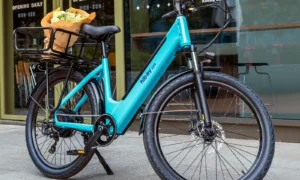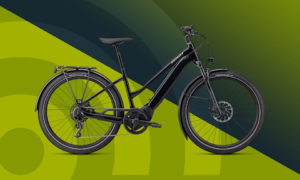Ebikes have surged in popularity in recent years, offering a fun and eco-friendly transportation option. With the wide variety of ebikes available today, it can be daunting to determine which model best fits your needs and preferences. This comprehensive guide will walk through the key factors to consider when selecting the ideal electric bikes for adults.
Ebike Benefits and Drawbacks
First, a quick look at the advantages and downsides of owning an ebike compared to a regular bicycle or other transportation:
Benefits:
- Requires less physical exertion
- Increases riding range
- Faster commute times
- Ability to carry more cargo
- Conquers challenging hills
- More accessible for all fitness levels
- Fun way to get around
Potential Drawbacks:
- Higher initial cost
- Heavier than regular bikes
- Requires charging and battery maintenance
- Complex electronics can fail
- Attractive target for thieves
- Some learning curve for new riders
Keep this overview in mind as we delve into finding the perfect ebike for your personal situation.
Ebike Types by Riding Style
Ebikes come in a variety of styles suited for different riding purposes. Assess how you plan to use your ebike to narrow your search:
- Road Bikes – Lightweight with narrow tires for efficient street riding and commuting
- Mountain Bikes – Rugged with wide tires for gripping off-road trails
- Cruisers – Comfort-focused for casual neighborhood riding
- Commuters – Equipped with racks, fenders and lights for transport utility
- Cargo Bikes – Built for loading substantial cargo in front or rear
- Folding Bikes – Compact and packable for multi-modal transport
Consider if you’ll need off-road capabilities, carrying capacity, or portability to inform your ebike type.
Motor and Power Options
The motor is what sets an ebike apart, providing electric pedal assistance. More powerful motors provide greater acceleration and climb hills easier but use more battery. Assess your performance needs:
Low Power – 250W motors adequate for flat urban riding
Mid Power – 500-750W better for hills and carrying extra weight
High Power – 1,000W+ motors maximize torque for challenging terrain
Front Hub – Simple and inexpensive but can affect handling
Rear Hub – Provides good traction but vulnerable to rear impacts
Mid-Drive – Centralized weight, great torque, preferred for hills
More wattage equals faster speed and acceleration but drains batteries quicker.
Battery Range Considerations
The battery capacity greatly affects your ebike’s range per charge. Average estimates:
Small – 300Wh = 15-30 miles range
Medium – 400-500Wh = 25-45 miles range
Large – 600Wh+ = 40-70+ mile range
Evaluate your typical trip distances and needs to select adequate battery capacity. Also consider charging access for longer trips.
Drive Systems and Gearing
The drive system transmits power from the motor and pedals to the rear wheel. Consider gearing options:
Single Speed – Simple, low maintenance. Good for flat areas.
Internally Geared Hub – Enclosed, smooth gear changing.
Derailleur Gears – More ratios for hills, some maintenance.
Mid-Drive Cassette – Integrates shifting with the motor.
Automatic Gearing – Maintains optimal cadence without shifting.
More gears provide mechanical advantage climbing slopes but add complexity.
Pedal Assist and Sensors
Pedal assist determines how the motor augments your pedaling. Most systems sense your effort in real time:
Cadence Sensor – Motor output based on pedal RPMs
Torque Sensor – Power varies by pedal pressure applied
Speed Sensor – Uses bike speed to estimate assist amount
Torque sensors feel the most natural but cost more.
Suspension and Frame Materials
Suspension soaks up bumps and vibration. Important for off-road riding but adds weight. Frame materials affect weight, shock absorption and cost:
Rigid Frame – No suspension, lighter but rougher ride
Front Suspension – Smooths out bumps up front
Full Suspension – Suspension in front and rear for maximum shock absorption
Aluminum Frame – Affordable material that is stiff and lightweight
Steel Frame – Strong, absorbs shock well but weighs more
Carbon Fiber – The lightest and stiffest but priciest option
Assess your ride comfort needs and budget tradeoffs.
Tires and Wheels
Tires greatly affect the riding experience. Choose based on your predominant riding surface:
Road Tires – Narrow, smooth for pavement. Fast with good range.
Hybrid Tires – Medium width suits pavement and dirt paths.
Mountain Tires – Wide with rugged tread for traction off-road.
Fat Tires – Super wide profile for snow, sand or mud.
27.5″ or 29″ Wheels – Larger diameters roll over objects easier but are heavier.
Wider tires with tread sacrifice some efficiency but grip better off-road.
Brakes
Quality brakes are important for safe stopping power:
Rim Brakes – Pads grip the wheel rim. Operate in wet but less power.
Disc Brakes – Pads squeeze a rotor. Powerful but pricier.
Mechanical – Brake pad tension applied by cable and lever.
Hydraulic – Fluid transfers pressure for progressive braking feel.
Regenerative Braking – Recharges battery while decelerating. Effective at slower speeds.
Hydraulic disc brakes offer the best all-condition performance.
Display and Controls
The display acts as your speedometer and data dashboard:
Basic LED display – Shows just battery life and assist level.
Mid-range LCD – Adds speed, range, riding mode.
Smart displays – Connect to apps and navigation on your phone.
Ergonomic buttons or control pads should allow easy assist adjustments on the fly.
Battery Integration vs. Removable
Integrated batteries disappear into the frame for a sleek look. But removable batteries allow:
- Easier charging without moving the entire bike
- Securing the battery indoors to prevent theft
- Swapping in spare batteries for longer range
If removable, ensure it locks securely while riding.
Additional Useful Features
Consider convenience and utility features:
Lights – Integrated headlights and taillights for riding safety.
Fenders – Block splashes from wet roads.
Rear Rack – Helps carry items and pannier bags.
Kickstand – Provides parking support when loading cargo.
Phone Charger – Convenient way to charge your devices on the go.
Add-ons like baskets, bags and mirrors can enhance functionality too.
Riding Position and Handlebar Style
Handlebar type and seat position determine riding posture:
Flat Bar – Upright posture good for commuting in traffic.
Drop Bar – Crouched forward position for aerodynamics.
Raised Bar – High handlebars for an ultra upright, comfy seat.
Adjustable Stem – Allows tweaking handlebar height.
Consider your flexibility, comfort needs and visibility requirements.
Brand Reputation and Reviews
Stick to reputable ebike brands with a track record of quality. Some top names include HappyRun, Specialized, Giant, Cannondale, rode1Up, Aventon, Juiced Bikes, Rad Power Bikes and others.
Research online reviews and talk to owners to learn pros and cons of specific models that interest you. This can reveal useful real-world insights.
Key Takeaways on Picking the Best Ebike
To summarize this ebike buying guide:
- Choose an ebike type aligned with your predominant riding purpose, whether road, mountain, cargo or a specialty bike.
- Select a motor with adequate power for your terrain and a battery with sufficient range for rides between charges.
- Consider gearing, pedal assist responsiveness, frame materials and suspension design based on your needs.
- Opt for durable, safety-focused components like hydraulic disc brakes and integrated lights when possible.
- Make sure the ergonomics and riding posture match your comfort preferences.
- Test ride ebikes to experience factors like handling, noise and power delivery firsthand.
- Stick with quality brands and read reviews to learn pros and cons before deciding.
- Calculate real-world range using battery Watt hours x 0.1 x 0.62.
Find the best ebike technology, features and performance your budget allows.
Using this detailed criteria and advice, you can zero in on the ideal electric bike for your individual needs, preferences and riding style! Happy ebike hunting.



































